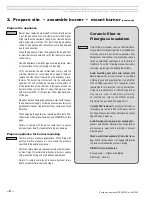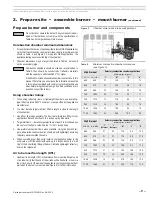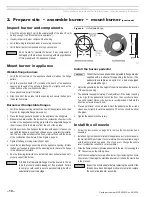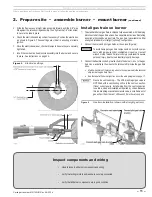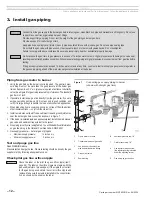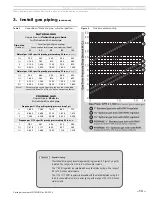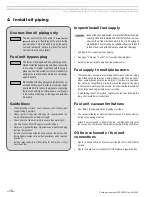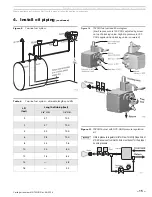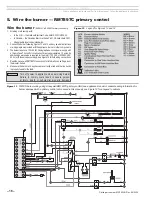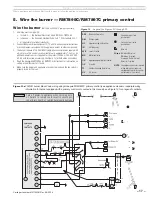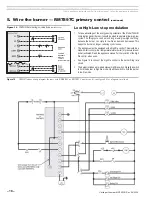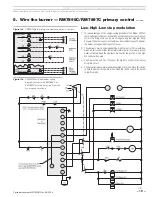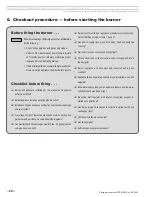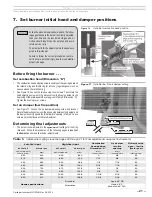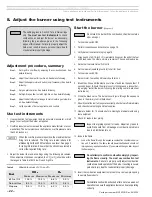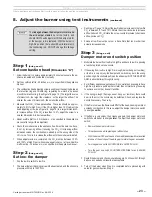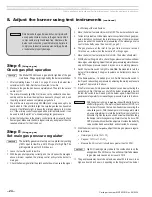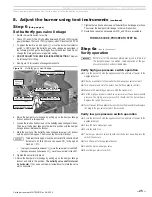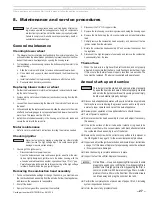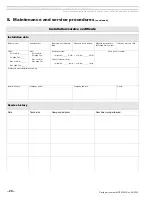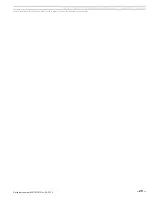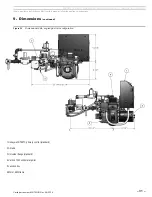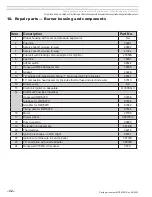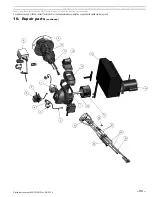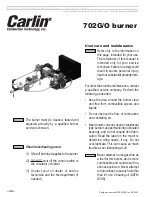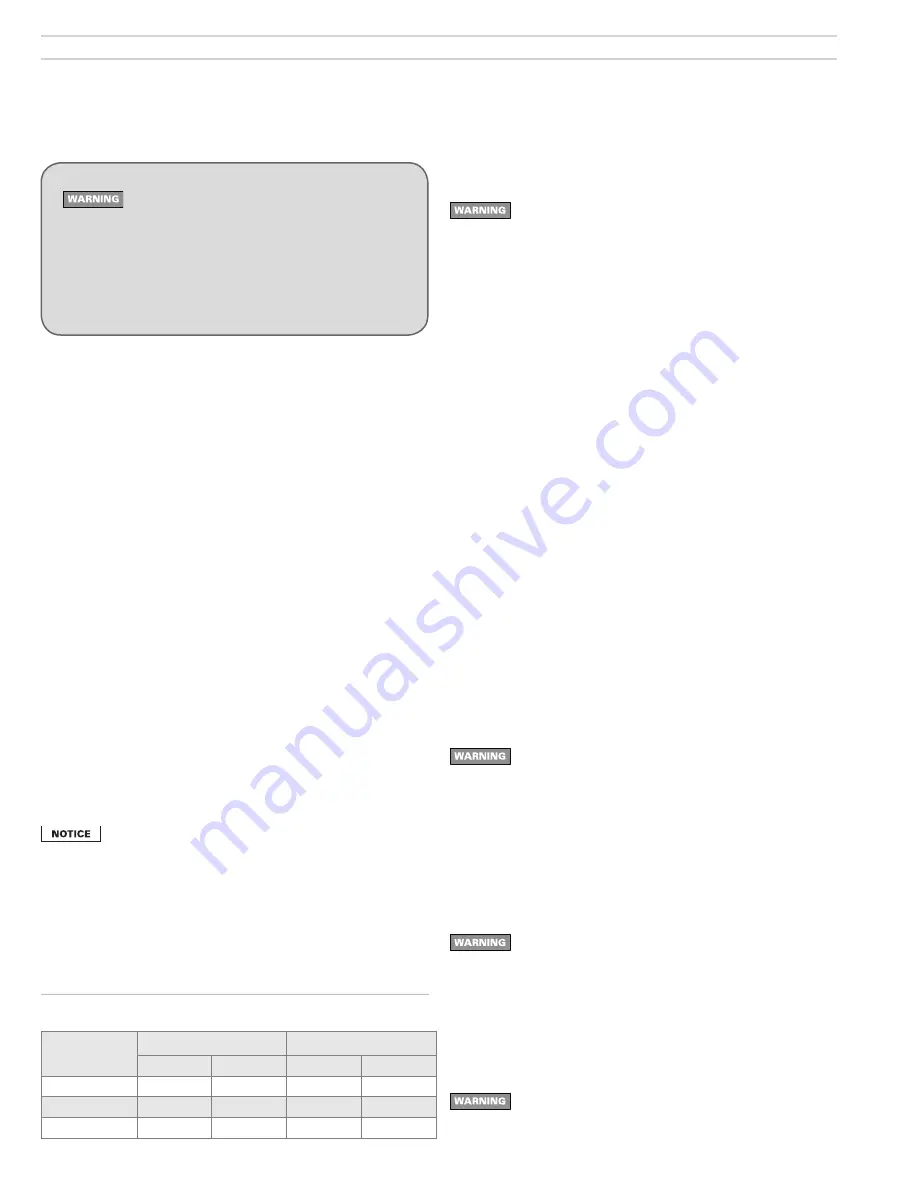
Model 702G/O Advanced gas/oil burners — Instruction manual
Carlin part number MN702GO Rev. 06/23/14
– 22 –
Where appliance instructions differ from this manual, follow the appliance instructions.
Adjustment procedure, summary
Step 1:
Set high-fire oil airflow by adjusting the combustion head. See
details following.
Step 2:
Adjust the air damper for low-fire oil. See details following.
Step 3:
Adjust the damper motor end switch (only if necessary). See details
following.
Step 4:
Set gas pilot operation. See details following.
Step 5:
Set high-fire gas flow to match high-fire air. See details following.
Step 6:
Adjust the butterfly valve linkage to match low-fire gas to low-fire
air. See details following.
Step 7:
Verify operation of burner, appliance, and controls.
Use test instruments
1.
Use combustion test equipment and an accurate manometer or draft
gauge to correctly set the burner as required.
2.
Overfire pressure must not exceed the appliance manufacturer’s recom-
mendations. The burner must never be fired at an overfire pressure more
than 0.60 inches w.c.
When the overfire pressure is positive, the maximum burner
firing rate is reduced. The firing rate is also reduced for
altitudes higher than 2000 feet above sea level. See page 3
for rating information. Ensure that the oil nozzle selected is
correct the required firing rate.
3.
Adjust the burner fuel and air settings using the following procedures.
When adjustment has been completed, the CO
2
(or O
2
) should be within
the ranges in Table 6, at both low fire and high fire.
Table 6
Allowable values of CO
2
and O
2
Fuel
CO
2
O
2
Minimum Maximum Maximum Minimum
#2 Fuel Oil
10.5 %
12.5 %
6.6 %
3.9 %
Natural Gas
8.5 %
10.0 %
6.2 %
3.6 %
Propane
9.5 %
11.2 %
6.0 %
3.5 %
8. Adjust the burner using test instruments
The settings given in Section 7 are initial settings
only. You must use test instruments to check
combustion, and adjust the burner as necessary,
following the procedures given in the following
pages of this manual. Failure to properly adjust the
burner can result in severe personal injury, death
or substantial property damage.
Start the burner
(firing on oil)
Do not start the burner if the combustion chamber contains
oil or oil vapor.
1.
Turn service switch OFF.
2.
Perform inspections and checkouts on page 18.
3.
Verify burner is set according to page 19.
4.
Slip one end of a 3/16-inch I.D. clear plastic hose over the end of the fuel
unit bleed valve, the other end into a container. Then open bleed valve.
5.
Set burner fuel selector switch to OIL.
6.
Set thermostat (operating controls) to call for heat.
7.
Turn service switch ON.
8.
Burner motor, fuel unit and blower should turn on.
9.
Bleed the oil line until the plastic line is free of bubbles; then another 15
seconds longer. (Should the primary control timing cause a lockout dur-
ing purging, restart the burner following the primary control data sheet
instructions.)
10.
Close the bleed valve. The burner should cycle through the sequence
given in the primary control data sheet.
11.
Should control/burner fail to operate correctly, shut burner off immediately
and check burner settings and fuel supplies.
12.
Operate burner for 15 minutes before making final adjustments using
test equipment.
13.
Check for leaks in fuel piping.
Inspect fuel piping system for leaks. Repair any leaks to
avoid fire hazard from oil leakage or combustion problems
due to air infiltration into oil.
14.
Inspect the flame
•
Look at the flame through the appliance combustion chamber observa-
tion port, if available. The flame should be well-defined and should not
impinge on any appliance surface. (If you make air changes later, inspect
the flame again.)
Do not attempt to confirm combustion simply by inspect-
ing the flame visually. You must use combustion test
instruments. Failure to properly verify/adjust combustion
could allow unsafe operation of the burner, resulting in severe
personal injury, death or substantial property damage.
15.
Insert the combustion equipment test probe into a vent sample opening
to sample flue products.
All installations should be checked after one to two weeks of
operation to ensure the appliance/burner units are operating
correctly.

